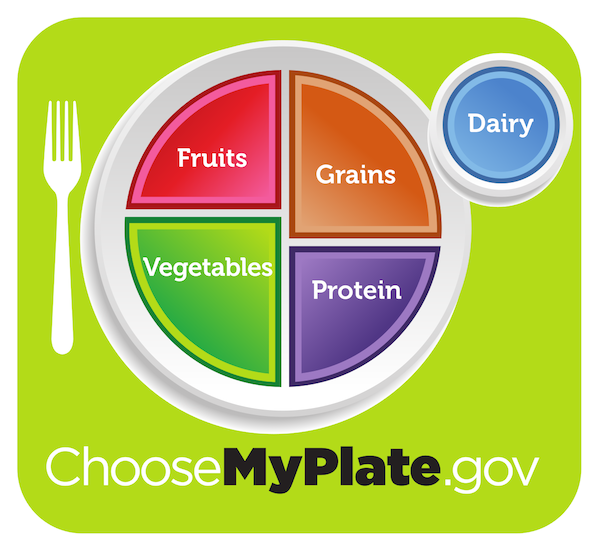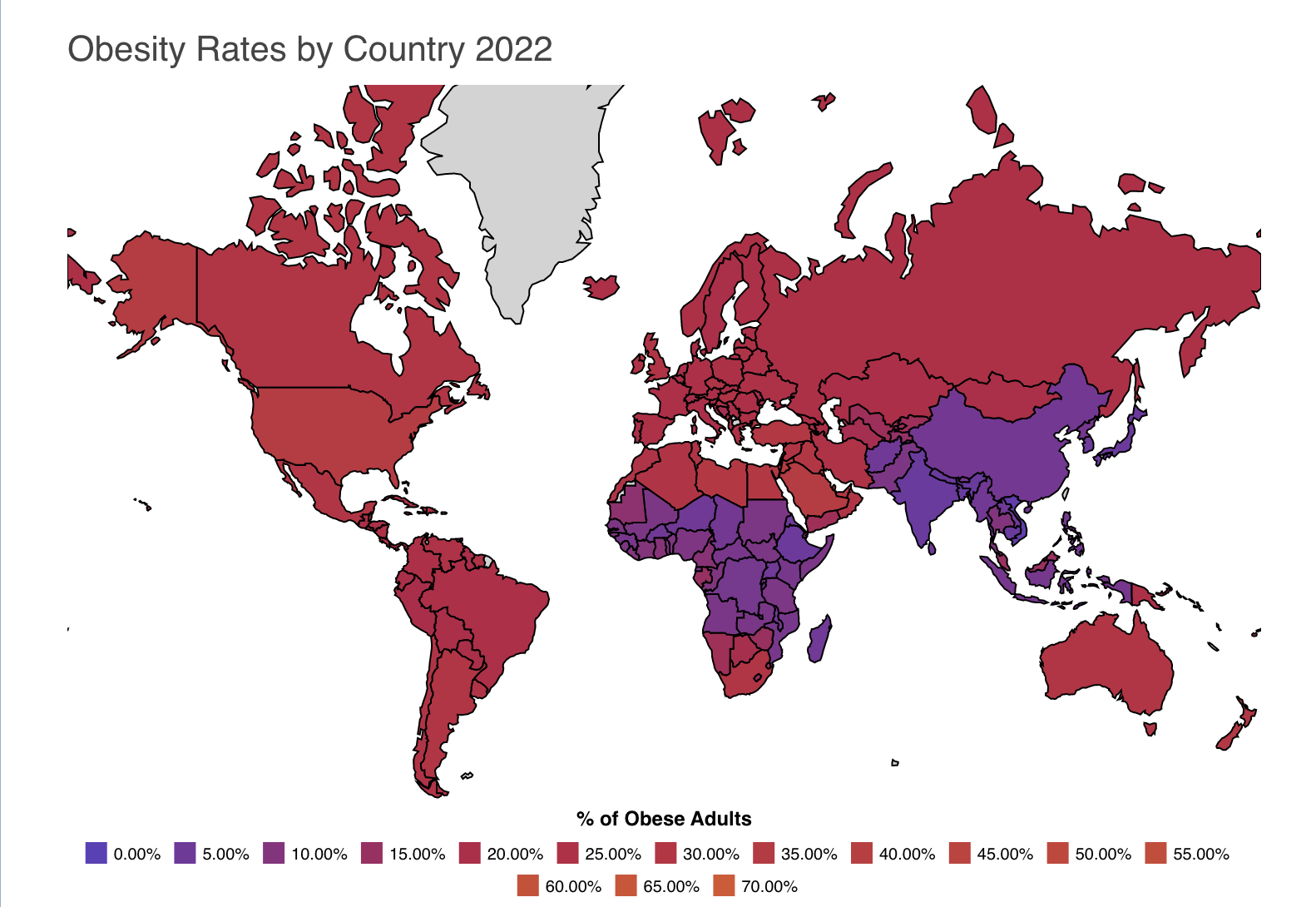Nutrition
Is It Possible To Get All The Essential Nutrients From Diet Alone?
“Just eat a balanced diet and you’ll get all the essential nutrients your body needs!” Said the nutritionist, personal trainer, doctor, or add in any other health care professional. Sometimes they may even say, “It’s not rocket science”.
Well, a balanced diet may not be rocket science. But what always goes through my mind is what actually constitutes a balanced diet? Is the mythical balanced diet written down anywhere? If it is, I certainly haven’t found it.
Even if it was, does a “balanced diet” contain all the vitamins, minerals, and other essential nutrients we need on a daily basis?
Perhaps eating a balanced diet was easy in the past, when governments published exactly what we had to eat to be healthy.
Table of Contents
The food pyramid – did it work?
It started with the Swedish government in 1974 – they were the first country to publish a food pyramid. It wasn’t until 1992 when the United States Department of Agriculture (USDA) published its own food pyramid.
Supposedly, it was easy… you just picked 7-11 servings a day from the bread, cereal, rice, and pasta group. Mix that with vegetables, fruit, some milk, and a chicken wing and voila – you were then “eating healthy.”

There was just one problem…
In 1992, around 2.5% of Americans had diabetes, today it’s 10.5%!
In the same time period, the obesity rate went from 18% of the population being obese to 37% (2, 3).

Switching from the food pyramid to MyPlate
Hugely aware of their failure, the USDA’s Center for Nutrition Policy and Promotion got rid of the pyramid. They then replaced it with their “MyPlate” graphic in 2011.
Now, whoever came up with the MyPlate graphic was certainly inspired as it’s really about as useful as ejection seats on a helicopter.

Unsurprisingly, since the introduction of “MyPlate” in 2011, the high rate of increase in the levels of obesity and diabetes has not slowed down one iota.
Of course, it’s a trend not just seen in the USA, but all throughout the developed world and in many developing countries now as well.

Comparing essential nutrients from diet vs the RDA
Perhaps I am being too harsh on the USDA. I know that coming up with a completely balanced diet is very difficult.
Here’s what I mean by this…
A 2006 study looked at the diets of 70 athletes and sedentary individuals who were all looking to improve their health or performance (4). The subjects all made efforts to eat as healthily as they could.
The researchers then picked the best 20 diets from the 70 initially analyzed. The 20 diets were split evenly between 10 men and 10 women and represented:
- Two professional cyclists
- Three amateur cyclists
- Three amateur triathletes
- Five eco-challenge amateur athletes
- One amateur runner
- Six sedentary (non-athletes)
The researchers then tested the diets against the US RDA (recommended daily allowances) for 10 vitamins and 7 minerals.
| Vitamins analyzed in the study | Minerals analyzed in the study |
| Vitamin A | Iodine |
| Vitamin D | Potassium |
| Vitamin E | Calcium |
| Vitamin K | Magnesium |
| Vitamin B1 | Phosphorus |
| Vitamin B2 | Zinc |
| Vitamin B3 | Selenium |
| Vitamin B6 | |
| Vitamin B12 | |
| Folate (aka Vitamin B9) |
Amazingly, the researchers found that none of the 20 diets met the RDA’s for all of the vitamins and minerals!
Compared to the RDAs, the researchers determined that:
- Men – averaged deficiencies in 40% of the vitamins and 54.2% of the minerals tested
- Women – averaged deficiencies in 29% of the vitamins and 44.2% of the minerals tested
So, no, not even these health-conscious individuals were getting all the essential nutrients from their diets!

In 2009, the USDA produced figures showing the average percentage of nutrients that the average US person was getting from their diet. They highlighted some major issues.

These figures are unlikely to improve anytime soon either, regardless of how much effort people are putting into their diet.
Why is it so hard to meet the RDAs of essential nutrients from diet alone?
Researchers at the University of Texas looked at the USDA data for 43 common fruits and vegetables from both 1950 and 1999. They found a significant reduction in the levels of protein, calcium, phosphorus, iron, riboflavin (vitamin B2), and vitamin C (5).
A further study published in the Journal ‘Nutrition Health’ looked at data published by Dr. McCance from King’s College, London. The data were originally published in 1940 to help with diabetic dietary guidance but continued to be updated until 1991. It included figures on 27 varieties of vegetables, 17 varieties of fruit, 10 cuts of meat as well as some milk and cheese products. The study found that over that time there ‘had been a significant loss of minerals and trace elements in these foods‘ (6).
The authors of both studies then concluded that the reduction in nutrients in food was related to modern agricultural methods. These included the use of pesticides, hormones, antibiotics, and food additives. Moreover, mineral depletion of the soil, increased heavy metals, and excessive fertiliser use also contributed to the decline.
The authors also suggested the change to quicker and higher-yielding varieties of fruit and vegetables meant they were spending less time in the ground. When harvest time came, they had lower nutrient levels because they had less time to absorb all the good stuff in the ground!
Does it actually matter if I don’t get the RDA of a particular nutrient?
If you asked a doctor, chances are they would probably say it’s only a problem if you have a specific disease caused by a nutrient deficiency. For example, Beriberi (vitamin B1 deficiency) or Pellagra (vitamin B3 deficiency).
However, we have to be realistic and think about how true this is likely to be. For instance, let’s examine energy production, one of the most fundamental biochemical reactions in the body.
A textbook will probably describe the process as glucose being oxidised into ATP (energy), carbon dioxide, and water. This is, of course, true. But the book will likely leave out that this process is only possible with the help of various nutrients! Examples would be Magnesium, Iron, Zinc, Copper, Manganese, Selenium, CoQ10, Phospholipids such as Phosphatidylcholine, and the B vitamins.
Deficiencies in any of these essential nutrients will lead to inefficiency in energy production. Also, the mitochondria will deteriorate gradually. This is very concerning because most energy production occurs in the mitochondria (7).
What will be affected in the body by a lack of energy?
The answer is potentially everything.
The degeneration of the mitochondria itself is now considered a leading cause of ageing (8). When we look at all the other biochemical reactions in the body, we see that nutrients are needed for all of them at some stage.
Dr. Bruce Ames, a leading researcher into nutrient insufficiencies, developed the “Triage Theory.” He said that moderate deficiencies over the years lead to accumulated damage. Eventually, this damages our DNA and RNA. The development of various diseases is also linked to these deficiencies. For example, cancer, cognitive decline, heart disease, mitochondrial decay, stroke, and more (9).
The Triage Theory initially came from studies into vitamin K. In one of them, mice were bred to lack 11 genes known to code for vitamin K-dependent proteins. This means they were not able to perform functions that needed vitamin K. The researchers found that these mice were more susceptible to bone fragility, type 2 diabetes, arterial calcification, calcific aortic valve disease, and spontaneous cancer (10).
Ames went on to conclude that “If the triage hypothesis proves to be correct, as the vitamin K analysis suggests, it will demonstrate the importance for a long and healthy life of avoiding modest micronutrient deficiencies for minimizing cancer and other age-related diseases, and for changing how people think about nutrition and health”.
So what do I do now?
As we’ve seen in this blog post, it’s very difficult to get all essential nutrients from diet alone. But it’s not something that should give you much cause for concern.
Dr. Ames went on to say that inexpensive micronutrient intervention may then help reduce the incidence of diseases associated with ageing. In other words, he’s suggesting making up any likely shortfall from the diet by supplementation.
Therefore, a high-quality multivitamin might be the best insurance policy against ageing and living a longer life. A perfect example is our Intelligent Labs Adult Multivitamin and Women’s Prenatal Multivitamin with their 25 essential vitamins and minerals.
We would also recommend looking for a multivitamin that contains the body’s active versions of B6 as Pyridoxal-5-phosphate (P-5-P), Folate as 5 MTHF, and B12 as Methylcobalamin.
Finally, if you’re wondering when is the best time to take vitamins, it should be in the morning, preferably with nutritious food. This healthy food + high-quality multivitamin combo is the best approach to a “balanced diet.”
References
(1) Food pyramid (nutrition), from Wikipedia: https://en.wikipedia.org/wiki/Food_pyramid_(nutrition)
(2) Long-term Trends in Diabetes, CDC’s Division of Diabetes Translation, April 2017
(3) Obesity in the United States, taken from Wikipedia: https://en.wikipedia.org/wiki/Obesity_in_the_United_States
(4) Food Alone May Not Provide Sufficient Micronutrients for Preventing Deficiency, Bill Misner, J Int Soc Sports Nutr. 2006; 3(1): 51–55.
(5) Changes in USDA food composition data for 43 garden crops, 1950 to 1999. Davis DR, Epp MD, Riordan HD. J Am Coll Nutr. 2004;23(6):669-682.
(6) A study on the mineral depletion of the foods available to us as a nation over the period 1940 to 1991, David Thomas, Nutr Health . 2003;17(2):85-115.
(7) Mineral and vitamin deficiencies can accelerate the mitochondrial decay of aging. Ames BN, Atamna H, Killilea DW. Mol Aspects Med. 2005;26(4-5):363-378.
(8) Mitochondrial theory of aging matures–roles of mtDNA mutation and oxidative stress in human aging. Wei YH, Ma YS, Lee HC, Lee CF, Lu CY. Zhonghua Yi Xue Za Zhi (Taipei). 2001;64(5):259-270.
(9) Prevention of mutation, cancer, and other age-associated diseases by optimizing micronutrient intake. Ames BN. J Nucleic Acids. 2010;2010:725071. Published 2010 Sep 22.
(10) Vitamin K, an example of triage theory: is micronutrient inadequacy linked to diseases of aging? McCann JC, Ames BN. Am J Clin Nutr. 2009;90(4):889-907.




